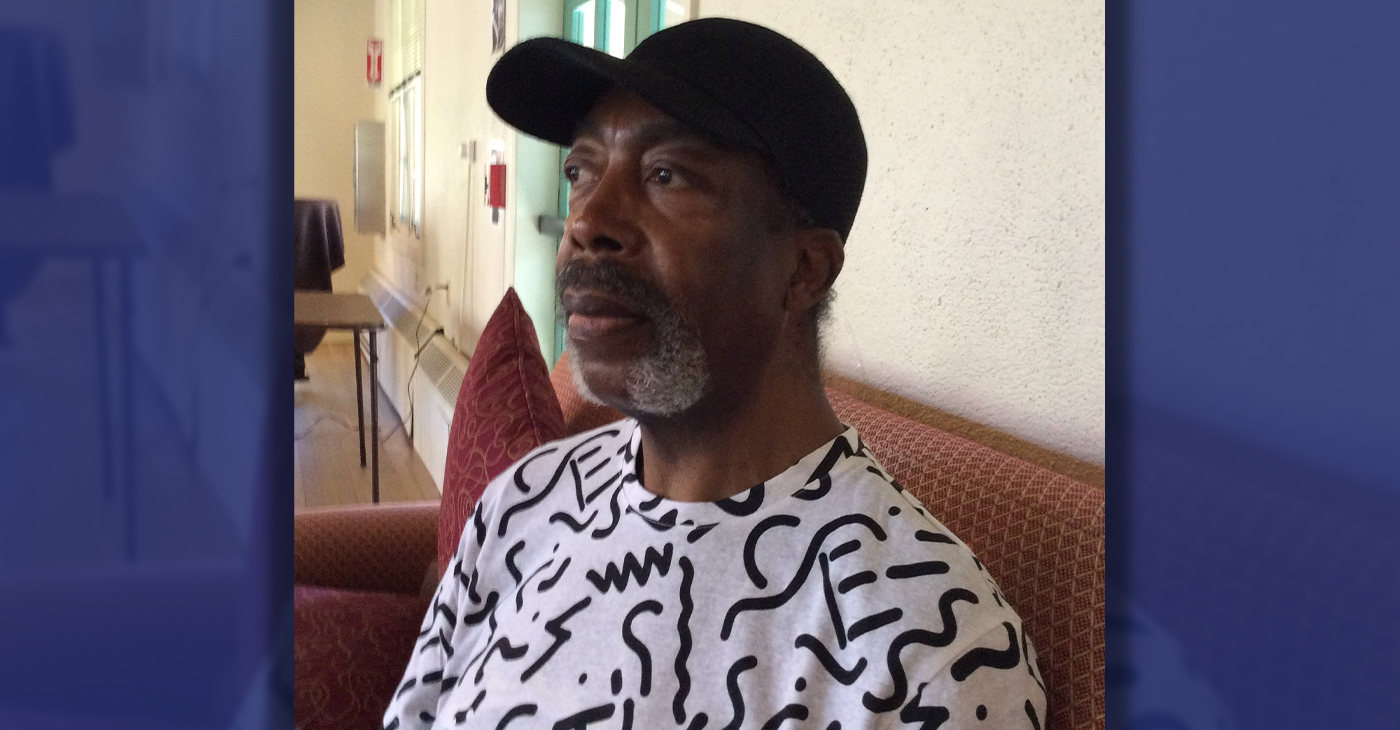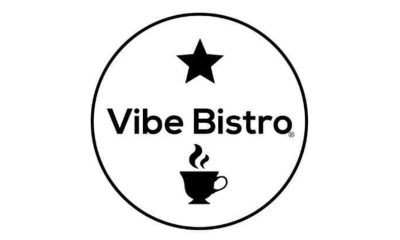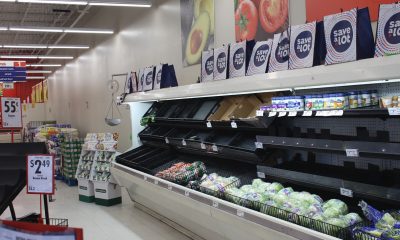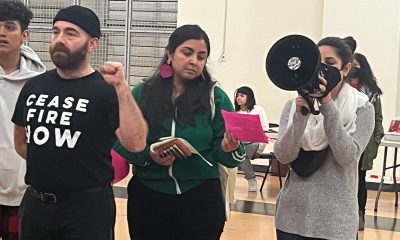Business
Black Business Spotlight: Pimento Jamaican Kitchen
MINNESOTA SPOKESMAN-RECORDER — Over the past seven years, Pimento Jamaican Kitchen has become a Twin Cities fixture for Jamaican cuisine with locations on both sides of the river. This includes its flagship Minneapolis’ Eat Street location, as well as a new restaurant that just opened in St. Paul.
Over the past seven years, Pimento Jamaican Kitchen has become a Twin Cities fixture for Jamaican cuisine with locations on both sides of the river. This includes its flagship Minneapolis’ Eat Street location, as well as a new restaurant that just opened in St. Paul this past weekend.
Armed with a $100 tent, his grandmother’s recipes, and a grill from his backyard, Tomme Beevas got his start in 2012. “We brought [the grill] to the Bryn Mawr garage sale without a clue as to what would happen.”
He served food for free in exchange for customer feedback and social media sign-ups. “From there, we tweaked the menu and built a grassroots network.”
The next year, Beevas won a Food Network reality show that included free restaurant operations for a year at the Burnsville Center. “That’s how we ended up getting our own restaurant,” he said. “Eventually, we were able to open up our Eat Street location and at the TCF Bank Stadium, have our food truck, our rum bar, and our backyard bar. Now we’re pleased to be on the other side of the river in Saint Paul at the Keg and Case Market.”
The MSR sat down with Beevas to learn more about his journey from backyard griller to restaurant boss.
MSR: What inspired you to get into the food business?
Tomme Beevas: The inspiration comes from me being able to share my grandma Baby Lue’s recipes with my neighbors and newly adopted community in Minnesota. Every day, I’d come home from my corporate job tired, stressed out, and I’d fire up the grill to relax. The neighbors would be there every single day. Then one day we were, like, “Let’s test out this concept and see how it goes.”
MSR: What is your main product?
TB: Jerk chicken is our top seller.
MSR: How did you choose the new location in Saint Paul?
TB: Pimento strives to be the global premier provider of Jamaican food experiences. We knew that in order to do that we had to expand beyond Minneapolis. When Keg and Case Market approached us, it made perfect sense because it was an area that was already bringing together the community and other like-minded businesses.
MSR: What’s your vision and goal for where you want to take your business?
TB: After we figure out the Minneapolis and Saint Paul area, then we figure out how do we best take it nationally. Is it a franchise model? Is it owning all of them? Is it taking on other investors?
We do know that we have the opportunity and that we have investors from around the country and, in fact, around the world who have expressed interest. We want to be able to build it smart and grow wisely.
MSR: How does your business impact the community?
TB: Our business impacts the community first and foremost by providing authentic Jamaican culture to those who either don’t know or those who are avid fans. When they come here to Pimentos, they feel safe and know that it is a space that you can come to no matter who you are and follow our mantra: “Don’t worry, eat happy.”
We offer a safe space for guests, we offer healthy food that feeds their body, and we offer a space that feeds their spirit with the Jamaican vibe.
MSR: Besides food, how else are you serving the community?
TB: One of the things that we want to make sure people are aware of this summer is a Jama Market. It’s a principle for collective economics. We’re providing a space in our backyard where small startups can come — like a farmer’s market — and promote their goods and services for free.
Our guests can come, learn about these businesses, and invest in them as well. Whether it’s you selling your perfumes or you selling your art, we want to make the space available for startup entrepreneurs to be able to use the safe space for Pimento to help start their businesses.
MSR: What’s your biggest challenge so far in owning a business?
TB: The biggest challenge so far, without a doubt, has to be access to capital. As a restaurant, let alone as a Black-owned restaurant, access to capital is very limited. Thankfully, we’ve been able to do it very slowly and intentionally. We’ve been able to grow using what little funds we could find. Thanks to groups like MCCD [Metropolitan Consortium of Community Developers], MEDA [Metropolitan Economic Development Association], and Sunrise Bank, we’ve been able to get the seed funding to continue to grow.
MSR: Financing has been a major challenge for most of the Black businesses we’ve interviewed. Do you know any Black-owned businesses that have gotten a loan through a bank outside of MCCD, MEDA or Sunrise Bank?
TB: You can quote me: “silence.” I’m literally thinking, and I cannot think of one that has not used, for lack of a better term, “charity funding” through the nonprofit organizations. No, unfortunately, and I know many Black business owners.
MSR: What’s been the most rewarding part of owning a business for you?
TB: The most rewarding part is providing opportunities for those that normally wouldn’t have them. Not just job opportunities, but well-paid job opportunities and well-paid advancement opportunities. Our approach is about taking those [needing such opportunities] from our communities and having them be a part of the ground floor of a startup that is aiming to be global.
MSR: What advice do you have for aspiring entrepreneurs?
TB: Take your time and do it small. That is not advice that I would have taken when I was starting, but I was forced to take it eventually. When they say, “Rome wasn’t built in a day,” that is the truest advice in the entrepreneurial world.
At Pimento, we started off with a $100 tent and the grill from my backyard. We grew and invested $3,000 at the end of the summer into buying our first box truck to move our grill and tent around town. From that, we grew incrementally day after day after day.
The other piece of advice would be to start where you are right now and be gentle with yourself. Don’t take it personally when you’re given advice. You’ll get there one day at a time.
MSR: Is there a legacy you want to leave?
TB: I’m building from my grandmother Baby Lue’s legacy — she was a legend. She was able to become the first Black millionaire woman out of West Kingston, Jamaica. She was very community-minded, and she helped other businesses grow within that community.
I was able to watch her grow her empire. I was able to see that and use it as the inspiration to start to my own.
MSR: Are there any deals that readers can take advantage of?
TB: We have deals going on all the time. To find out about the deals, you can follow us on Facebook at Pimento Kitchen.
Pimento Jamaican Kitchen is located at 2524 Nicollet Ave. in Mpls. and at Keg and Case West 7th Market, located at 928 West Seventh Street in St. Paul.
This article originally appeared in the Minnesota Spokesman-Recorder.
Bay Area
Mayor Breed Proposes Waiving City Fees for Night Markets, Block Parties, Farmers’ Markets, Other Outdoor Community Events
Mayor London N. Breed introduced legislation on April 26 to encourage and expand outdoor community events. The first will waive City fees for certain events, making them less costly to produce. The second will simplify the health permitting for special event food vendors through the creation of an annual permit. Both pieces of legislation are part of the Mayor’s broader initiative to bring vibrancy and entertainment to San Francisco’s public right of ways and spaces.

Mayor’s Press Office
Mayor London N. Breed introduced legislation on April 26 to encourage and expand outdoor community events.
The first will waive City fees for certain events, making them less costly to produce. The second will simplify the health permitting for special event food vendors through the creation of an annual permit. Both pieces of legislation are part of the Mayor’s broader initiative to bring vibrancy and entertainment to San Francisco’s public right of ways and spaces.
Outdoor community events are integral to San Francisco’s vibrant culture and sense of community. These events include night markets, neighborhood block parties and farmers markets, and bolster the City’s economy by supporting local businesses and attracting tourists eager to experience San Francisco’s unique charm and food scene.
They offer residents, workers and visitors, opportunities to engage with local artists, musicians, and food vendors while enjoying the San Francisco’s stunning outdoor spaces and commercial corridors.
The legislation will allow for more and new community gatherings and for local food vendors to benefit from the City’s revitalization.
“San Francisco is alive when our streets are filled with festivals, markets, and community events,” said Breed. “As a city we can cut fees and streamline rules so our communities can bring joy and excitement into our streets and help revitalize San Francisco.”
Fee Waiver Legislation
The events that can take advantage of the new fee waivers are those that are free and open to the public, occupy three or fewer city blocks, take place between 8 a.m. and 10 p.m., and have the appropriate permitting from the ISCOTT and the Entertainment Commission.
The applicant must be a San Francisco based non-profit, small business, Community Benefit District, Business Improvement District, or a neighborhood or merchant association. Fees eligible for waiver include any application, permit, and inspection/staffing fees from San Francisco Municipal Transportation Agency, Department of Public Health, Fire Department, Entertainment Commission, and Police Department.
Currently, it can cost roughly anywhere between $500-$10,000 to obtain permits for organized events or fairs, depending on its size and scope. Organizations and businesses are limited to a maximum of 12 events in one calendar year for which they can receive these fee waivers.
Food Vendor Streamlining Legislation
The second piece of legislation introduced will help special event food vendors easily participate in multiple events throughout the year with a new, cost-effective annual food permit. Food vendors who participate in multiple events at multiple locations throughout the year will no longer need to obtain a separate permit for each event. Instead, special event food vendors will be able to apply and pay for a single annual permit all at once.
“Many successful food businesses either begin as pop-up vendors or participate in special events to grow their business,” says Katy Tang, Director of the Office of Small Business. “Giving them the option for an annual special event food permit saves them time and money.”
Currently, food vendors are required to get a Temporary Food Facility (TFF) permit from the Department of Public Health (DPH) in order to participate in a special event, among permits from other departments.
Currently, each special event requires a new permit from DPH ranging from $124-$244, depending on the type of food being prepared and sold. Last year, DPH issued over 1,500 individual TFF permits. With the new annual permit, food vendors selling at more than four to six events each year will benefit from hundreds of dollars in savings and time saved from fewer bureaucratic processes.
“This legislation is a step in the right direction to make it easier for food vendors like me to participate in citywide events,” said Dontaye Ball, owner of Gumbo Social. “It saves on time, money and makes it more effective. It also creates a level of equity.”
Bay Area
Faces Around the Bay: Sidney Carey
Sidney Carey was born in Dallas, Texas. He moved with his family to West Oakland as a baby. His sister is deceased; one brother lives in Oakland. Carey was the Choir Director at Trinity Missionary Baptist Church for 18 years.

By Barbara Fluhrer
Sidney Carey was born in Dallas, Texas. He moved with his family to West Oakland as a baby. His sister is deceased; one brother lives in Oakland.
Carey was the Choir Director at Trinity Missionary Baptist Church for 18 years.
He graduated from McClymonds High with a scholarship in cosmetology and was the first African American to complete a nine-month course at the first Black Beauty School in Oakland: Charm Beauty College.
He earned his License, and then attended U.C., earning a secondary teaching credential. With his Instructors License, he went on to teach at Laney College, San Mateo College, Skyline and Universal Beauty College in Pinole, among others.
Carey was the first African American hair stylist at Joseph and I. Magnin department store in Oakland and in San Francisco, where he managed the hair stylist department, Shear Heaven.
In 2009, he quit teaching and was diagnosed with Congestive Heart Failure. He was 60 and “too old for a heart transplant”. His doctors at California Pacific Medical Center (CPMC) went to court and fought successfully for his right to receive a transplant. One day, he received a call from CPMC, “Be here in one hour.” He underwent a transplant with a heart from a 25-year- old man in Vienna, Austria
Two years later, Carey resumed teaching at Laney College, finally retiring in 2012.
Now, he’s slowed down and comfortable in a Senior Residence in Berkeley, but still manages to fit his 6/4” frame in his 2002 Toyota and drive to family gatherings in Oakland and San Leandro and an occasional Four Seasons Arts concert.
He does his own shopping and cooking and uses Para Transit to keep constant doctor appointments while keeping up with anti-rejection meds. He often travels with doctors as a model of a successful heart-transplant plant recipient: 14 years.
Carey says, “I’m blessed” and, to the youth, “Don’t give up on your dreams!”
Business
Maximizing Your Bank Branch Experience
In a world of online tools that let you make banking transactions with the touch of a button, the idea of visiting a branch might seem unnecessary. However, if you haven’t visited your local branch recently, you might be surprised by what it has to offer. Your branch is much more than a place to deposit and withdraw money – it can offer the opportunity to build valuable relationships with people who can help you achieve financial independence.

Sponsored by JPMorgan Chase & Co.
In a world of online tools that let you make banking transactions with the touch of a button, the idea of visiting a branch might seem unnecessary.
However, if you haven’t visited your local branch recently, you might be surprised by what it has to offer. Your branch is much more than a place to deposit and withdraw money – it can offer the opportunity to build valuable relationships with people who can help you achieve financial independence.
Diedra Porché, Head of Community and Business Development at Chase, talks about how the bank model has evolved to maximize the branch experience for customers; how connecting with your local branch team can help you think differently about money and investing for your future.
How can a customer feel connected to a bank branch?
I love that question because we ask ourselves the same thing every day. Being part of the community means meeting with local leaders to find out what they need from us and then designing our branches around that. For example, at some of our community branches we have what we call a living room where we can host financial workshops, small business pop-up shops or nonprofit organization meetings. We also hire locally. You feel much more connected talking about financial aspirations with people from your community who went to the same high school, place of worship or maybe frequented the same recreation center down the street when they grew up.
How can I build a relationship with my bank?
Customers should feel comfortable sharing their goals, needs and wants with their banker. Also, it helps to remember the Community Manager is there to help solve your finance challenges and build a roadmap for success. You might have a short-term or long-term goal to open a business, build your credit, become debt-free, buy a home, or save for retirement, and our community team can help. At Chase, we strive to make dreams possible for everyone, everywhere, every day. Your financial future starts with building those relationships.
How can customers change negative perceptions they have about managing their money?
Far too often, customers are intimidated when they visit a bank. Our goal is to demystify banking and money myths empowering people to make the right decisions. For example, a big myth is assuming you need a lot of money to have a bank account. You don’t! Another myth is you need to carry a balance on your credit card to build credit — actively using your credit card can demonstrate that you can use credit responsibly but carrying a balance won’t necessarily improve your credit score. Finally, understanding mobile and online banking safety is key. There are so many safeguards and protections in place to guard your personal information and funds.
What’s an easy step one can take to shift their financial behavior right now?
Cultivating self-awareness is a good first step. Start by taking inventory of your spending. Be honest with yourself about what you need and what you want. Too often, people confuse the two, which leads to bad decisions. Rent is something you need to pay. An extra pair of shoes is something you may want but before you buy them ask yourself if that’s the best use of your hard-earned money. Too often, our beliefs and our fears shape our financial realities. If any of those beliefs are limiting your financial behavior, it’s important to question and examine them, and then decide you’re open to learning something different.
What’s one perception about banking that you’d like to change?
I think folks are surprised there are so many resources available and accessible both at our branches and online, it’s always a good idea to visit a nearby branch and speak to a Community Manager or banker. Outside of what we offer in-branch, our teams also work with local neighborhood partners who provide a variety of services to support the community, businesses and residents. I received a unique piece of feedback from an employee who started with the bank and had lived in the same community his whole life. When he visited his local community branch, he said, “Diedra, when I walked in, I felt dignified.” Every time I recount that story, it warms my heart because that’s what we want — we want our centers to belong to the community.
-

 Community3 weeks ago
Community3 weeks agoFinancial Assistance Bill for Descendants of Enslaved Persons to Help Them Purchase, Own, or Maintain a Home
-

 Activism4 weeks ago
Activism4 weeks agoOakland Post: Week of April 3 – 6, 2024
-

 Business3 weeks ago
Business3 weeks agoV.P. Kamala Harris: Americans With Criminal Records Will Soon Be Eligible for SBA Loans
-

 Activism3 weeks ago
Activism3 weeks agoOakland Post: Week of April 10 – 16, 2024
-

 Community3 weeks ago
Community3 weeks agoAG Bonta Says Oakland School Leaders Should Comply with State Laws to Avoid ‘Disparate Harm’ When Closing or Merging Schools
-

 Community2 weeks ago
Community2 weeks agoOakland WNBA Player to be Inducted Into Hall of Fame
-

 Community2 weeks ago
Community2 weeks agoRichmond Nonprofit Helps Ex-Felons Get Back on Their Feet
-

 Community2 weeks ago
Community2 weeks agoRPAL to Rename Technology Center for Retired Police Captain Arthur Lee Johnson






















































